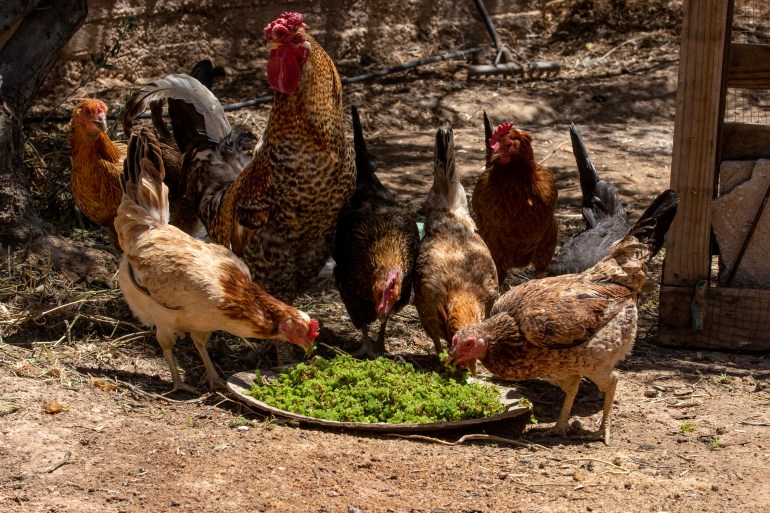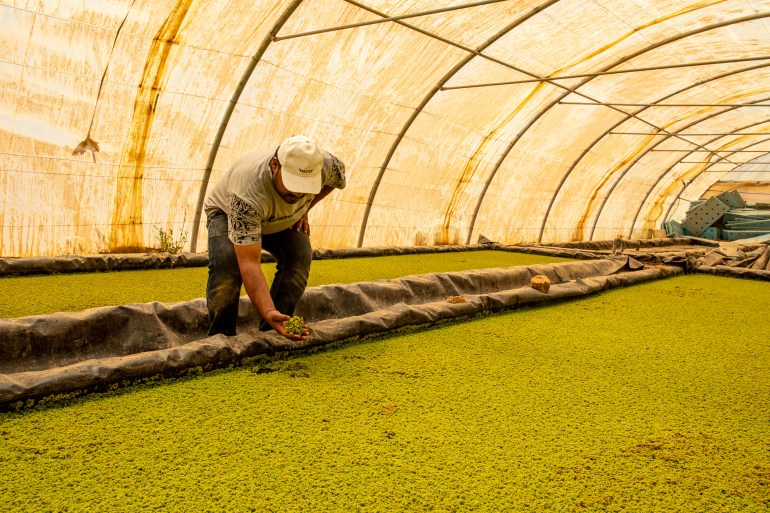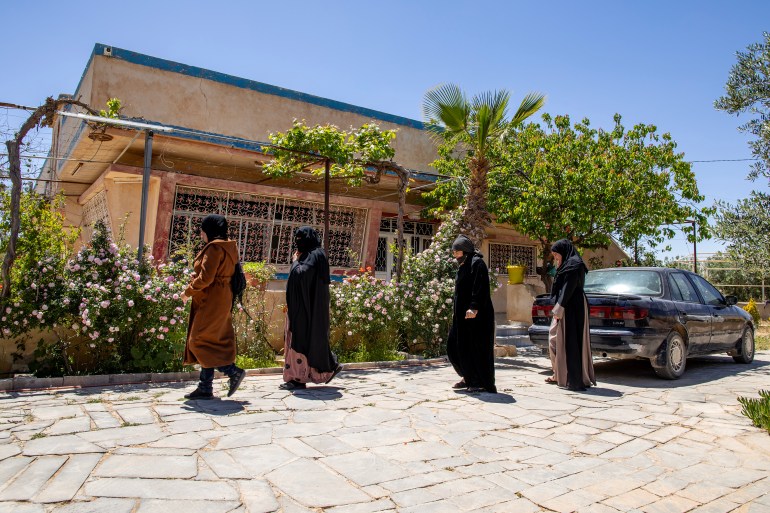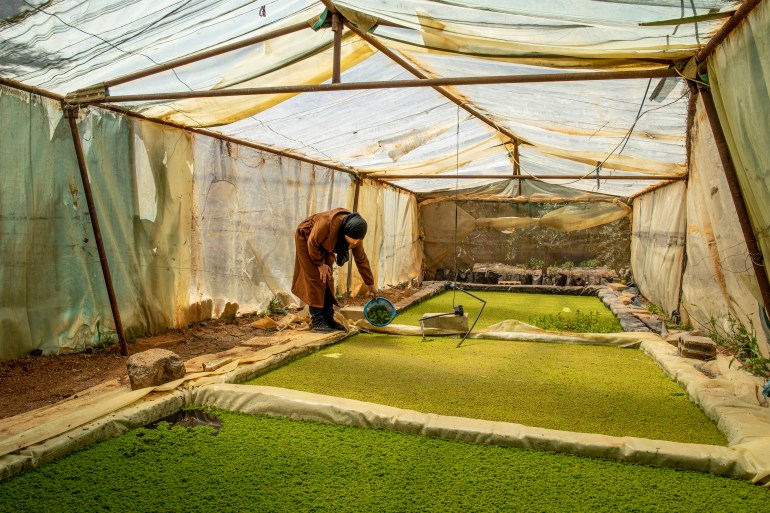The Azolla plant, about one to 2cm (0.8 inches) long, with soft green leaves, has emerged as a great alternative livestock feed, cheaper and easier to grow than corn.
The 39-year-old Jordanian and other members of her farming collective are raising eight chickens. She has switched to feeding them Azolla, which is also less water-intensive, making it even more popular among smaller farmers.
“Azolla saves us time, effort and money,” said al-Athemat, who began farming it in 2021 after attending training by ACTED, a development and humanitarian NGO based in France.
She is part of a farming collective of four Syrian and Jordanian women who work together to farm vegetables and raise livestock including chickens and sheep in the water-poor Mafraq governorate.
Mafraq – home to nearly 300,000 people in 2011 – saw its population almost double after some 200,000 Syrian refugees took shelter at Zaatari refugee camp in the wake of Syria’s war.
Azolla is indigenous to Asian, American and African countries, thriving in wetlands, streams, wastewater and other humid areas.

The plant contains high levels of proteins, amino acids, vitamins, minerals and antioxidants, leading to an increase in weight and milk production in animals such as cows, buffalos, sheep and goats, according to a study.
“This can have direct benefits for farmers in terms of improved income and access to nutritious food,” said Naem Mazahrih, who leads research at Jordan’s National Agricultural Research Center in Balqa.
A growing industry
Since 2020, more than 250 farmers, mostly women, from Mafraq, Irbid and Balqa governorates have been trained to grow Azolla, according to ACTED.
“Women can take care of their families and also farm Azolla,” said Naser Abu Ragheb, who manages ACTED’s sustainable farming practice.
ACTED’s trainees plant Azolla in their own houses or farming collectives, where they can use greenhouses and ponds for free.
But experts have warned against the ecological risks the crop presents.
“This can have cascading effects on the overall ecosystem and its biodiversity,” said Mazahrih of the National Agricultural Research Center.
Mazahrih notes that an overgrowth of Azolla can reduce light and oxygen in water sources, making it difficult for animals and other plants to grow.

To mitigate the risks, farmers learn sustainable techniques, including growing Azolla in controlled settings like greenhouses that are far from natural bodies of water.
Although Azolla seeds are more expensive than others, farmers can still save as it uses about 10 percent of the water required for corn and can halve the cost of fertiliser. It can also be harvested in 45 days, rather than 120 days for corn.
The plant sustains itself after harvesting with little maintenance.
Global and local impact
According to ACTED, female farmers report that Azolla has helped them reduce the monthly costs of feeding chickens by 80 to 90 percent.
According to farmers in Mafraq, the cost of feeding a chicken is more than 2 Jordanian dinars ($2.8) a month. For farmers with multiple chickens, the costs add up but Azolla virtually eliminates these costs.
Farmers in Jordan, a water-poor nation, struggle to grow animal feeds such as hay and corn and more than 90 percent of Jordan’s feed is imported each year, according to the National Agricultural Research Center.
“Jordan is already experiencing the impacts of climate change, including water scarcity and increased drought conditions,” said Mazahrih. “Sustainable farming practices, including Azolla cultivation, can enhance the resilience of farmers.”

“While livestock feed represents only one portion of agricultural production, the cultivation of Azolla has the potential to significantly decrease the water footprint of the livestock feed portion of agriculture production,” said Mohammad Mahmoud, director of the Climate and Water Program at the Middle East Institute in Washington, DC.
Families feel the impact
The impact could be more profound for women like Nisreen al-Eneze, a Syrian woman who came to Jordan as a refugee in 2013.
She now lives in al-Makeefta village, farming Azolla with the village collective.
Al-Eneze, 32, and her husband have struggled to put food on the table for their seven children as they have not been able to find consistent work in Jordan and sell eggs and other animal products for a portion of their income.
In addition, al-Eneze’s husband has tried to support the family through irregular work as a handyman and day labourer.
The family’s limited income further impacts their ability to buy clean water for drinking and irrigation, something that people in Jordan are forced to do, at great cost.

The non-profit ACTED has been trying to train vulnerable families such as the al-Enezes, who generate a portion of their income and food through the chickens, pigeons and rabbits that they own.
“We hope that farming Azolla can help us feed our chickens, pigeons and rabbits,” said al-Eneze, as she took the strainer from al-Athemat and harvested another basket of the green leaves.
She placed the plants on a plastic tray beside the coop for their eight chickens to eat.
Right now, they grow Azolla on a small scale in greenhouses, but they hope to begin selling their crops to the wider community for extra income.
“We’d like to buy more livestock,” said al-Eneze. “We want to have more stability in the future.”
Zeid Qiblawi contributed to this report.
